History & People
Here are brief descriptions or important people and places depicted in The Amazing Adventures of Kavalier & Clay who were, in fact, real. I have tried to keep a page number with each entry so that you will know where in the hard back edition each person appears; however, in the case of people like Houdini who seem to be mentioned every other chapter, page numbers have been ignored.
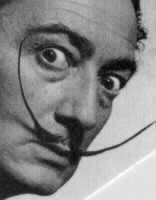 Salvador Dali (226)
Salvador Dali (226)
Dali was born in Figures, Spain in 1904. From an early age, Dali was interested in art, and at the age of 10 he had already taken up painting. When he was older, he attended the Municipal Drawing School. By 1918, his work was already seeing print in magazines and newspapers. He had been exposed early onto art movements like Impressionism, Post-Impressionism, and Futurism. He attended the Academia de San Fernando, but he was expelled after only one year for refusing to take an exam.
Around this time, Dali began to take interest in Cubism, Neo-Classicism, and Realism, before finally taking on Surrealism. The Surrealists focused on Freudian psychology and aimed at evoking emotions through sometimes bizarre images. It was around this time also that Dali met Gala Eluard, who would soon become his wife and muse.
In 1934, Dali officially separated himself from the Surrealist movement due to their open support of Marxist politics. In 1940, Dali and Gala fled France during the German invasion and made the United States their new home. Dali gained international fame around this time by using his image as a marketing tool, allowing himself to appear in television, advertisements, and publications.
Dali and Gala eventually moved back to Europe. His art began to take on new themes after the war, including religion. He also went through what is called his Nuclear and Atomic period after the use of the atomic bomb in the war. In 1970, Dali and Gala separated, though Dali never got over her and still persisted in visiting her when she would allow it. When she died, he quit doing art for the most part. He died of heart failure in 1989.
The Empire State Building
The Empire State Building began in competition between Walter Chrysler of the Chrysler Corp. and John Jakob Raskob, creator of General Motors, over who could build the tallest building. Raskob, with Coleman du Pont, Pierre S. du Pont, Louis G. Kaufman, and Ellis P. Earle, formed Empire State, Inc. Alfred E. Smith was named president of the corporation. The company set out to construct the magnificent building with William Lamb of Shreve, Lamb & Harmon as the designer. The tower is about 1453 feet high, 200 feet taller than the Chrysler Building, and was the tallest building until the World Trade Center was constructed in 1972. It was built faster than any building of its size to date. There are 6500 windows, 73 elevators, 102 floors, and 1860 stairs. The Empire State Building was completed in 1931.
According to Ronin Ro’s Tales to Astonish, which details the history of comic vets Jack Kirby and Stan Lee, Timely Comics owner Martin Goodman moved the Marvel Comics-predecessor into the Empire State Building in 1942 after World War II delivered “higher sales all around.” Goodman moved the company from the McGrawn-Hill Building to the 14th floor of the Empire State Building.
In a Nov. 2001 interview with Roy Thomas’s Alter Ego, former Timely editor-in-chief Victor Fago said Goodman made the move “[to] put everything in the same area.”
“They had a little reception area about 20′ by 10′,” he said. “They had a long corridor that stretched from Martin Goodman’s office to way in the back where they were doing the magazines. And off that was a promenade. They had offices with windows where the staff people worked.”
“I don’t think he expected to expand too much,” he continued, “because these were the war years and a lot of people were gone. Later, for $90 a week, I hired Marcia Snyder, an artist who had done newspaper strips. She dressed like a man and lived in Greenwich Village with a girlfriend named Mickey. I never thought about her being a lesbian; I didn’t care. We also had a letterer who freelanced for us; she had one arm.”
In the bullpen sat some of comics’ greats, including Stan Lee, Bill Everett, Dan DeCarlo, Marty Nodell and John Buscema. But their tallent went toward churning out immitations of “Disney funny animals,” Ro says, while Goodman lounged.
“Goodman spent most of his days sleeping on the chaise longue in the corner, near the windows and the spectacular view of Manhattan,” Ro writes. “When Fago came in with artwork, he’d open his eyes, sit up, glance quickly at the covers, and tell Fago to run with it.”
Lee luckily missed much of this, off volunteering for the war from 1941 to fall 1945. Still, upon his return, he tried to pitch new super-hero concepts, but with little success. Goodman insisted on following the trends, but sales dropped drastically when he bet big on Korean War-themed comics and lost.
Timely moved from the Empire State Building to small, window-less offices at 60 Park Avenue in 1951 during the company’s transition into Atlas Comics.
Empire Comics, of course, moved into the Empire State Building around Oct. 1940, parking itself on the 25th floor. Timely’s competition remained in the building through April 1954 when artist Joe Kavalier infamously leapt from the rooftop of the building and then bought-back the company. Kavalier, in the years following the war, had taken up an illegal residency on the 72nd floor of the building.
http://www.fiddlersgreen.net/buildings/new-england/empire-state/info/info.htm
http://www.esbnyc.com/
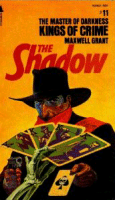 Walter B. Gibson (354, 518)
Walter B. Gibson (354, 518)
Gibson appears only briefly in Kavalier & Clay, but references are made at least two times, and his presence acts as a link between magic and comic books. Gibson was obsessed with magic, one might say. He wrote several books on magic, including Houdini’s Escapes and Houdini’s Magic. He went on to create the character The Shadow, who can be seen as a predecessor for many comic book characters such as Batman. His pseudonym on many of the early Shadow stories, Maxwell Grant, was in fact a tip-of-the-hat to magic dealers, Max Holden of New York and U. F. Grant of Pittsfield, Massachusetts. In the novel, Sammy may have even been partially inspired to create a Shadow-esque hero; when explaining the development of the Shadow, Gibson said “By combining Houdini’s penchant for escapes with the hypnotic power of Tibetan mystics, plus the knowledge shared by Thurston and Blackstone in the creation of illusions, such a character would have unlimited scope when confronted by surprise situations, yet all could be brought within the range of credibility.”
http://www.mysticlightpress.com/index.php?page_id=131
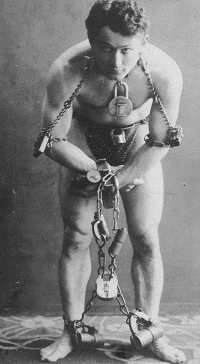 Harry Houdini
Harry Houdini
The hero of an entire generation of immigrant children, Harry Houdini, the World’s Most Famous Magician, was born Erich Weiss on March 24, 1874. He spent his entire life in ruses, deceiving the public in both escape and lifestyle. He claimed his entire life to have been born in Wisconsin, but in truth his family moved to America from Hungary when he was four. The Weiss family was of Jewish decent, but problems amongst his family arose when he married Bess (Wilhelmina Rahner), a Catholic.
Houdini’s fascination with magic developed after seeing traveling magician Dr. Lynn perform when he was young. Contrary to legend, Houdini took up magic when he was 17 to avoid factory work. He formed the Houdini Brothers with Jack Hayman. The name “Houdini” developed as a tip-of-the-hat to the famous magician Jean Eugene Robert-Houdin. Hayman later left the group and was replaced by brother Theodore (aka Hardeen) and then Bess Rahner, whom he married.
Houdini’s act developed at first with non-escape tricks, such as the Needle Trick, a cornerstone of his career. Eventually, though, he developed the Challenge Act in 1898, in which the audience would produce a pair of handcuffs for him to escape from. The act was the turning point in his career and marked the beginning of his escape acts. The Challenge Act expanded to include escaping from locations, such as crates and jail cells. He also incorporated the strait jacket into his act around this time.
Contrary to legend, Houdini did not die on stage performing the Water Torture Cell Illusion, but instead died of peritonitis on October 31, 1926.
http://www.magictricks.com/houdini/
Senator Carey Estes Kefauver (479)
Born in Madisonville, Tennessee in 1903, Carey Estes Kefauver was at first a lawyer in Chattanooga. In 1938, though, he made a large step into politics when he was elected to the U.S. House of Representatives. He served in the House until 1949, when he ran and won a seat in the Senate. With this win, Kefauver effectively ended the rule of “Boss” Edward H. Crump’s over Tennessee politics. Kefauver acted as the chairman of the Senate crime investigating committee during 1950 and 1951. Kefauver used the publicity from these hearings in his bid for the presidency, but he lost the Democratic nomination to Adlai Stevenson.
During 1954, Kefauver chaired the Subcommittee on Juvenile Delinquency. Kefauver, still desiring the presidency, hoped that his hearings on juvenile delinquency, especially regarding comic books, might help him get into the White House come the next election. Thus began the committee’s investigation into the comic book industry. Over a three-day period, the committee held their hearings, calling twenty-two witnesses and accepting thirty-three exhibits. Among the witnesses were Dr. Fredric Wertham and William Gaines of E.C. Comics. The committee found no proven connection between comics and delinquency. However, the Senate did call for the self-regulation of the comics industry, which brought about the Comics Code Authority.
In 1956, Kefauver was the Democratic party’s candidate for Vice President with Adlai Stevenson running for President. However, the two were defeated in the Eisenhower landslide. Kefauver spent the remainder of his life and time in the Senate fighting for civil-rights. He died in 1963.
http://www.crimeboss.com/history03-2.html
Louis Tannen’s Magic Shop
Loius Tannen founded his famous magic shop in New York in 1929. The shop, at least in name, still exists. It is owned today by Steven Brown, who took up ownership of the shop in 2002. The shop today is located at 24 West 25th St in Manhattan.
The 1939-1940 New York World’s Fair (374)
The World’s Fair was the ultimate escape. Taking place from 1939 to 1940, the fair was to establish hope for a generation devastated by the Depression and problems of Europe. “Build the World of Tomorrow,” as the slogan went, the fair’s emphasis lay in liberation from the mundane and hope to excite its visitors with spectacles. The most popular and famous spectacles were the 700-foot Trylon and 200-foot Perisphere, designed by the architectural firm of Harrison & Foulihoux. The only buildings at the fair colored white, the buildings were to stand for purity; readers may find some irony or simply humor in the fact that Tracy Bacon and Sammy had sex in such a “pure” building. As mentioned in the novel, the Perisphere also featured Democracity, a diorama representation of what could be the ideal city. The fair ran its course and ended after only two summers, but the ideas it inspired have lived on even to today.
http://xroads.virginia.edu/~1930s/DISPLAY/39wf/front.htm
Eleanor Roosevelt (384)
The niece of Teddy Roosevelt and wife to her distant cousin Franklin Delenour Roosevelt, Eleanor was the First Lady of the United States from 1933 to 1945. Eleanor was dedicated to politics and to her husband’s presidency. She was a strong supporter of humanitarian causes, including child welfare. Although critics have complained about the coincidence in the novel that Kavalier, through Rosa’s family, was able to get in contact with such an important figure, few critics dispel the fact that Eleanor would have, in all likelihood, reacted the way she did in the novel in regards to the Ark of Miriam.
Max Schmeling (192)
Schmeling, a German boxer around the time of the novel’s setting, is best remembered for his two fights with Joe Louis. In 1936, Schmeling fought the unbeaten United States boxer and won with a knock out in the twelfth round. A rematch was scheduled in 1938 when Louis won the title. With the Nazis now at the height of their power, the rematch came to symbolically represent the crisis between America and Nazi Germany. The rematch was short, as Louis knocked Schmeling out in the first round. Schmeling then served as a paratrooper during the war, perhaps, as Kavalier & Clay suggests, “as punishment for his defeat” (Chabon 193). Schmeling would forever be associated with the Nazis, but he in fact housed Jewish children in his hotel room and helped them escape Germany. In a way, then, Clay’s attack on Schmeling’s doppelganger may represent the theme of unjust persecution; just as the Jews were persecuted in Europe, many German Americans felt unfair treatment here in the states.
http://www.ibhof.com/schmelin.htm
Alfred Smith (206)
Alfred E. Smith was born on December 30, 1873 in New York to poor Irish parents. When his father died Smith quit school in before entering high school in order to work. He became interested in politics in his late twenties, and he soon found himself running for state assemblyman in 1903. After seven years in the Assembly, he became the Democratic leader, and became speaker when the Democrats gained control of the body three years later. Smith became increasingly interested in social problems, primarily factory conditions. In 1915, he was elected New York county sheriff, and he was elected president of New York City’s board of aldermen in 1915.
In 1918, Smith narrowly defeated the Republican incumbent for governor of New York. He lost his reelection in 1920, but came back to power in 1922 and remained governor until 1928. Smith’s social interests became a focus of his time in office. He reorganized the mess of a bureaucracy New York had developed from 187 state agencies with 19 organized departments. He established an executive budget. Other legislation that Smith endorsed focused on welfare, factory conditions, and housing.
Smith twice ran for president, and twice lost. The first time was in 1924. However, the Democratic convention did not respect his Roman Catholic religion or his anti-prohibition stance, and thus he did not earn the nomination. In 1928, though, Smith was nominated and ran against Herbert Hoover. However, the strength of the Republican party and Smith’s religion caused him a major defeat.
Smith never took political office again. Smith became president of Empire State Inc.
http://gi.grolier.com/presidents/ea/side/smith.html
Franchot Tone (201)
I honestly have little to say about this actor, because, as far as I can tell, his history has little significance to the novel. The only reason I do mention him is that he is supposed to look identical to the Escapist.
http://www.lynnpdesign.com/classicmovies/tone/
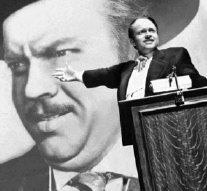 Orson Welles (354)
Orson Welles (354)
Described most often as a prodigy, Orson Welles was a master of his craft, and before the time of the novel’s setting had already conquered both theater and radio. On radio, Welles was known to be the voice of several dozens of characters, including the Shadow, and appeared on programs on nearly every station. With the help of John Houseman, Welles founded the Mercury Theater, a group of talented actors. With them, Welles went on to create some of the most ambitious radio and theater pieces ever created. These included a rendition of Shakespeare’s Julius Caeser in which Nazis stood in place of the villains. On radio, the Mercury Theater under Welles direction was responsible for the infamous War of the Worlds broadcast that caused panic across the nation.
Welles also had a side-interest in magic, accurately portrayed in Kavalier & Clay. Welles had indeed frequented Tannen’s, though most likely not as often as the novel suggests, and in fact had performed magic on numerous occasions. He had even met Houdini during his childhood. An interview with him is, in fact, available at Tannen’s website.
In 1940, Welles was given the opportunity to act, write, direct, and produce a movie by RKO Studios. Welles struggled at first to decide what would be his first film; for a time he toyed with an adaptation of Heart of Darkness. In the end, though, he chose to direct Citizen Kane, a story loosely based on the life of William Randolph Hearst. Hearst, angered by the movie, boycotted any advertising in his papers for the movie, and as a result the movie became a financial disaster and most of Hollywood dismissed it. Welles was never again given full-control of a movie. Kane movie went forgotten for several decades until critics realized the cinematography, editing, and effects of the movie, along with an incredible story and magnificent acting, made the movie arguably the greatest movie ever.
http://film.tierranet.com/directors/o.wells/
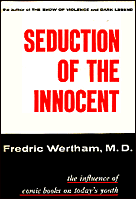 Dr. Fredric Wertham (478)
Dr. Fredric Wertham (478)
Born in Munich, Germany in 1895, Fredric Wertham would grow up to embody the greatest opposition comic books ever faced. Wertham studied at Kings College in London and the Universities of Muinich and Erlangen before earning his MD from the University of Würzburg in 1921. After some correspondence with Sigmund Freud, Wertham took up psychiatry. He settled in the United States in 1922, becoming a citizen in 1927.
Before Wertham set out on his crusade against comic books, one might say that he was a crusader for social and civil rights. His New York psychiatric clinic is thought to be one of the first in the nation in which convicted felons received psychiatric examination. He also wrote an article for The American Journal of Psychology titled “Psychological Effects of School Segregation.” The article was submitted to the United States Supreme Court in support of ending segregation.
Wertham’s studies focused on poor and troubled children, and it was due to this that he found what he believed to be a link between juvenile delinquency and comic books. Most of his patients read these violent books, and thus Wertham concluded that they may be causing severe effects on their minds. Wertham began his crusade against comic books around 1947 as he wrote articles and gave lectures against the “crime comic book” (any comic book with violence). This eventually led him to writing Seduction of the Innocent, the book that for a time spelled the end of comic books. Without any real scientific proof, Wertham introduced the public to his theories that Superman was in fact a fascist, Batman and Robin were gay, and Wonder Woman was a lesbian that was into kinky sex.
Excerpts from the book were printed in Reader’s Digest and the Ladies’ Home Journal, which led thousands of mothers to foam at the mouth. The U.S. Senate held hearings on juvenile delinquency in 1954. To avoid legal action, the comic book companies formed the Comics Code to regulate comic book content. Wertham never endorsed the Code, as he believed comic book companies could never regulate themselves. Due to the Code, many companies faded away, including EC Comics.
An ironic twist to Wertham’s story came in 1974 when his final book, The World of Fanzines: A Special Form of Communication was published. Wertham, in a move that seems counter to his entire crusade, praised the efforts of comic book fans who published fanzines as he saw it as a great non-violent hobby. Soon after publication, Dr. Wertham attended the New York Comic Art Convention. Expecting fans to rejoice in his celebration of their fandom, comic fans at the convention instead treated him with hostility, and Wertham left the convention and ended his involvement with comic books. He died in 1981.